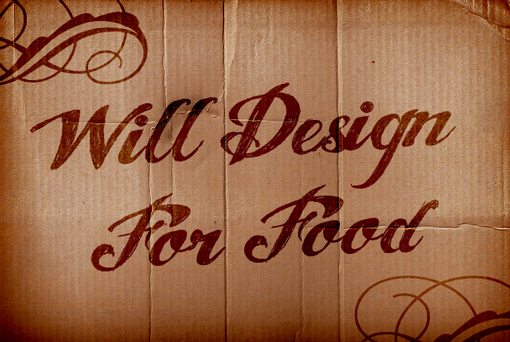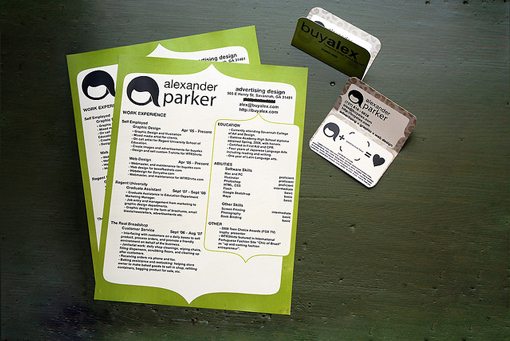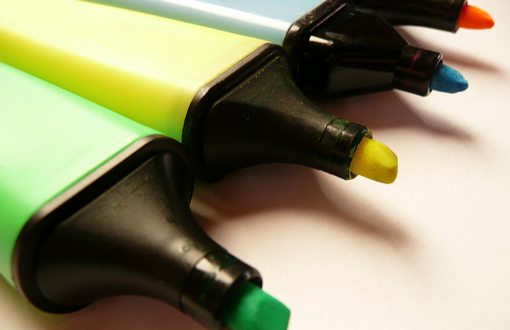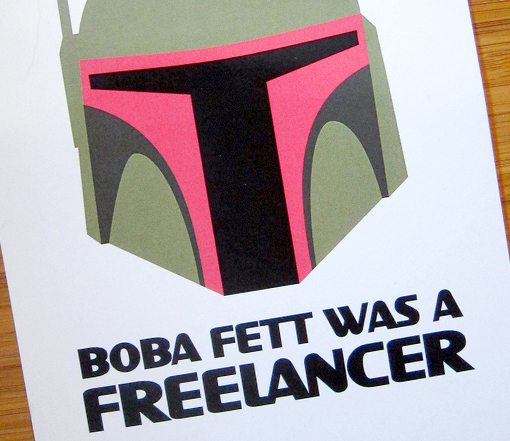How to Prepare for Your First Design Job Interview
So you’ve finally graduated and you’re ready to hit the bricks and start looking for your first real 9-5 design job. You searched some job postings and lined up a few interviews, what now? How can you impress potential employers fresh out of school?
In this article we’ll go over some of the dos and don’ts of preparing for design job interviews. You’ll learn what employers are looking for in a portfolio, resume and candidate so you can be better suited to land that dream job.
2 Million+ Digital Assets, With Unlimited Downloads
Get unlimited downloads of 2 million+ design resources, themes, templates, photos, graphics and more. Envato Elements starts at $16 per month, and is the best creative subscription we've ever seen.
A Different Kind of Design Dilemma
Design Shack members have the unique ability to submit their “Design Dilemmas” to us for consideration (completely free of course). We offer quick email advice when we can and if we think the topic is relevant to a large number of our readers, we dedicate an entire article to it.
All of the Design Dilemma posts that we’ve had in the past directly addressed needs surrounding specific designs that needed to be tweaked or overhauled, today’s dilemma is a bit different though.
Patrick Bianco Writes:
“I’ve recently graduated from College after studying Graphic Design. I have a portfolio of work and have been applying for numerous jobs. Now my Dilemma is that I have a job interview for a job that is within in the Fashion Industry. My works that I have for my folio, are not really suited for fashion (except one). Should I quickly try to produce work related to the job position and industry, or just show what I already have?”
When you’re fresh out of college, it’s really hard to know the appropriate protocol in situations like this and it’s not always easy to find someone who can help. We’re glad you asked Patrick and hope this post offers a decent response.
Into the Real World
Design school is great, it provides you with that obligatory education tick on your resume. Unfortunately, your years of schooling don’t mean much more than that to a typical employer looking for a designer.
In this business, no matter what niche you’re looking to get into, employers want one thing above all else: experience. Design is one of those interesting professions where I regularly see the more educated person passed up for a job in favor of the more experienced. It’s not uncommon to see a Creative Director pulling in over $100,000 a year, despite only having a high school diploma, dishing out orders to the degree-holding people under him. The difference? He has over ten years of solid professional experience and they don’t.
Some Free Advice
Don’t worry, this tangent does tie into some practical advice. Before you even start looking for a steady job, you should obviously create a resume. As you’re going about this, remember the advice above and don’t spend too much space bragging about which school you went to (education is important, but won’t land you the job on its own). A much better use of ink is to brag about real-world clients you’ve had and projects you’ve overseen.
If you have zero experience, your first step might be to try to pick up some freelance clients and build yourself a nice little portfolio of work. I’ve seen far too many designers lately looking for work with only a handful of school projects in their portfolios. School projects are nice, but they don’t hold a candle to real samples from paying clients. Don’t be afraid to work for super cheap at first. Money comes later, at this point you need bragging points!
One more tip in this area, be careful of sounding too much like you’re just out of school when you’re in the interview. Don’t rant on and on about your professors or how great you did on your senior project. You’re a professional that also possesses an education, not a diploma with lips. Unless you’re applying for a student intern position or a really low paying job, talking about the fact that you just stepped out of the classroom won’t help you!
Choosing a Design Program

To backtrack a little, if you’re just now deciding to go to school for design, it’s a good idea to look for a program that incorporates a few actual client projects. If you’re going to be paying for a design degree, you might as well buy the one that gets you some actual work under your belt while you’re at it.
If this simply isn’t an option for you, work nights. Odds are you have to work your way through school anyway, as soon as you feel like you’ve picked up the necessary skills, get some freelance work ASAP. By the time you graduate you want to be fully employable, not another kid with a degree and zero knowledge of how things work in the real world.
Tailoring Your Resume to the Interview
With all that said, we haven’t really addressed Patrick’s question yet! He is interviewing for a design job in the fashion industry, but doesn’t really have any experience in that arena. Should he modify his portfolio?
First off, this should be a two part question. Your portfolio is definitely key in landing a job, but your resume is what gets thrown in the stack with fifty others so you want to make sure that stands out as well. Let’s talk about the resume first and then we’ll move onto the portfolio.
Last year I embarked on a job search that lasted several months. Phoenix, where I live, is an incredibly competitive market for designers and with a down economy this means that every job you gun for has literally hundreds of applicanats. I was called in for several interviews and I always heard the same thing: they received over 200 resumes but only called in ten people for interviews. My resume stood out over those of at least 190 other applicants on multiple occasions. That’s a pretty decent compliment.
How did I pull it off?
The first thing that helped me stand out was the design of the resume itself. I didn’t use Microsoft Word to create something boring, I approached it like any other project designed it in Illustrator and Photoshop. I didn’t make anything crazy, designers too often sacrifice readability and organization in resumes to go for the wow factor, I merely made a professional-looking document that looked like it was from a designer instead of a secretary.
Apart from the design, I would often tweak my resume to better suit a particular position. If done properly, this is in no way a dishonest practice. You wouldn’t be asked the same questions for every interview, so why approach all of them with the same resume?
For instance, I have experience in both web and print design. When I applied for a print position, which experience do you think I highlighted more in the resume? Often, it’s as simple as a restructuring of the information but there were plenty of times when I actually changed the content as well. There’s a science to this that is really easy to pick up.
Lifting Key Words from the Job Posting
Every business has their own list of buzz words that they’re currently excited about, and these often make their way into job descriptions. As you’re browsing job postings, print out those that you’re interested in. Then take the time to go through each with a highlighter to point out key phrases. Here’s a tip: this is exactly what many potential employers will do to your resume!
Back to my own example, “Shopper Marketing” was a key term that I noticed in one particularly enticing posting. I just happened to be quite the expert in the subject, only the firm that I worked for at the time referred to it by a different term. It was the same concept but I was using jargon in my resume that they may not have been familiar with. To adjust, I went in and used their term instead.
There will be several times when you see a job posting emphasize a particular skill or even a piece of software that is important. All you have to do for each job you apply for is a quick read through to make sure you remembered to hit those points before shooting off your resume. Simply seeing these things mentioned will make you resonate as a candidate.
Tailoring Your Portfolio
Finally, we reach the heart of Patrick’s question. This is a much different situation than merely changing some words around. Here we’re discussing whether or not work should actually be created to impress a potential employer.
This is a trickier situation. As I said before, the best way to really impress potential employers is with actual client work, not imaginary projects. Keep in mind that there are also serious ethical implications to simply not telling them that the work is fictional. So where does that leave us?
As I said above, you have to be confident in your current portfolio of work if you expect to land a job. The fashion industry uses graphic designers for magazine layout, advertising, store signs, branding, etc. I would make sure you’re presenting the work you’ve done in these general areas (obviously shoot for the one that they’re hiring for). In other words, make it a point to specially feature the elements in your portfolio that mirror what it is you would be doing in this new job, even if the industry isn’t the same.
If you don’t think you have enough of this kind of work to land the job, it might be the case that you’re not qualified for the position in the first place. This truth sucks, but you can seek to remedy it by searching for that kind of work in the future.
Added Support
Now, as support for your strong real-world projects, you might consider creating a mock-up or two of whatever they’ll have you designing. When they see your work they will absolutely ask you how that experience applies to the position they’re offering. If you have a visual answer to that question, you’ll impress them. Don’t lie and say that you worked for some client that you didn’t, be honest and tell them you just wanted to be sure they could be confident in your ability to perform the job at a satisfactory level.
In Defense of Freelancing
Much of the advice above centers around the idea that it’s pretty difficult to land a great job with only a college degree and zero experience. This may be incredibly depressing for any of you out there that meet this criteria. Should you even try?
My answer is yes. Sometimes you get lucky and find someone looking for fresh blood or simply friendly enough to give you a shot at proving yourself. However, if you find that you’ve been on ten interviews and your phone has yet to start ringing, it’s time to pick that phone up and start finding work on your own.
Most careers do not have the luxury that designers do. We can make our own way, play by our own rules, and make dang good money sitting in our underwear at home. Landing freelance gigs can be much easier than finding a full-time job. If you’re set on working a 9-5, find freelance work that you think will make you look good in an interview (by now you should know what people are looking for). The more you have, the better you’ll seem to those fashion industry folks or whoever it is you’re trying to impress.
Be careful though, freelancing tends to be addicting. Countless designers pick up freelancing as a way to fill the gap in between jobs and find themselves still doing it ten years later. You might just find that a “real job” isn’t at all what you were looking for!
Conclusion
To sum up, the design industry is an incredibly competitive environment. Ideally, when you graduate from college and start looking for a job, you’ll already have a few years of experience and a decent portfolio. Trust me, you want to hit the ground running if you’re going to beat your classmates out of a job.
To make yourself look as good as possible on paper, make sure you tailor your resume to each position that you apply for, carefully selecting out keywords and skills from the posting as necessary. Likewise, structure the presentation of your portfolio during the interview in such a way that you highlight the skills and experience most relevant to the position.
Finally, if you find yourself in the ago old catch-22 of needing a job to build experience but not getting hired because you don’t have any experience, look for freelancing opportunities that will improve your portfolio and help you gain the real-world skills that you can’t learn from a classroom.
Image Credits: buyalex, photosteve101, Criterion and Laughing Squid.







